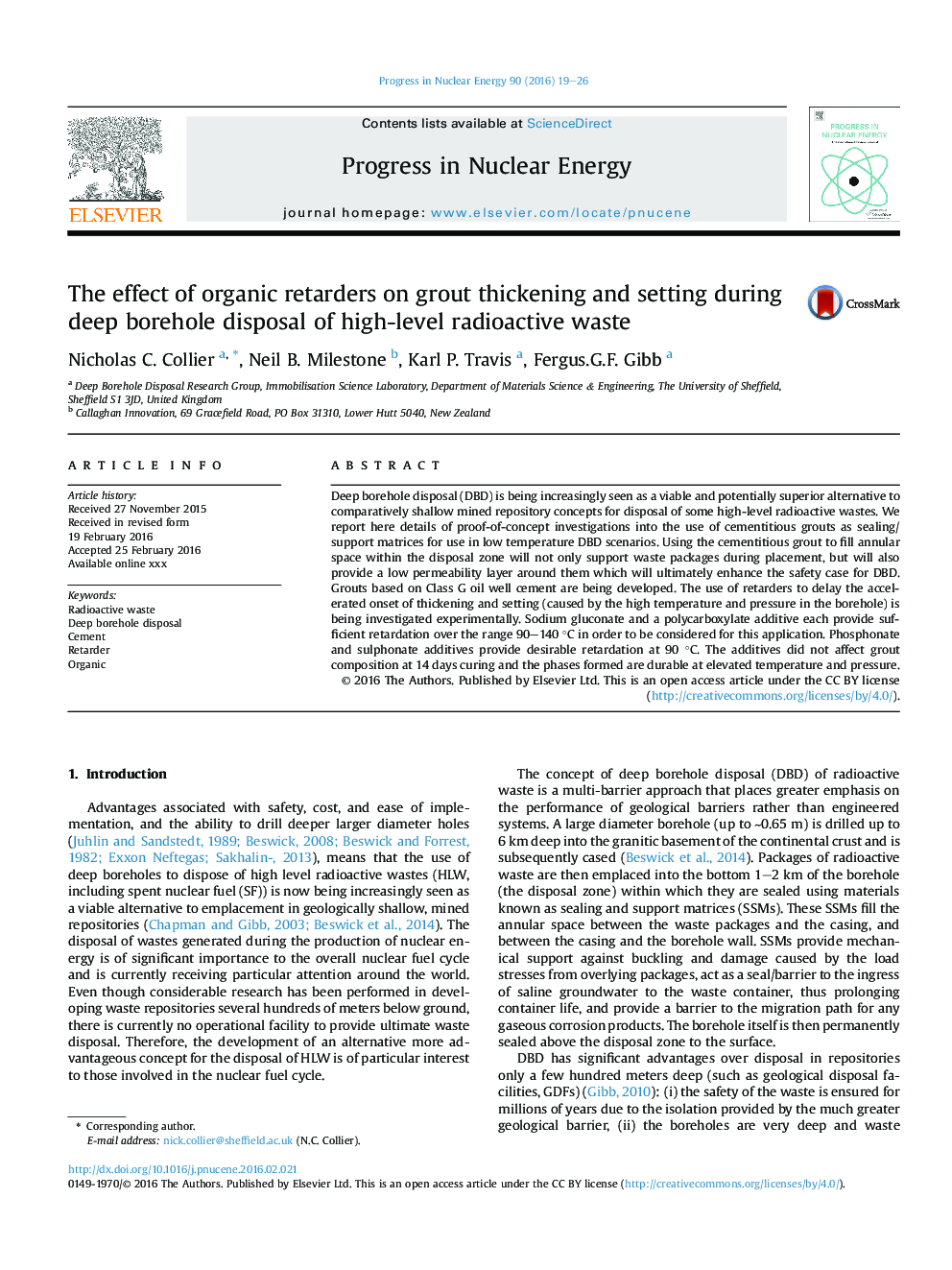| Article ID | Journal | Published Year | Pages | File Type |
|---|---|---|---|---|
| 8084972 | Progress in Nuclear Energy | 2016 | 8 Pages |
Abstract
Deep borehole disposal (DBD) is being increasingly seen as a viable and potentially superior alternative to comparatively shallow mined repository concepts for disposal of some high-level radioactive wastes. We report here details of proof-of-concept investigations into the use of cementitious grouts as sealing/support matrices for use in low temperature DBD scenarios. Using the cementitious grout to fill annular space within the disposal zone will not only support waste packages during placement, but will also provide a low permeability layer around them which will ultimately enhance the safety case for DBD. Grouts based on Class G oil well cement are being developed. The use of retarders to delay the accelerated onset of thickening and setting (caused by the high temperature and pressure in the borehole) is being investigated experimentally. Sodium gluconate and a polycarboxylate additive each provide sufficient retardation over the range 90-140 °C in order to be considered for this application. Phosphonate and sulphonate additives provide desirable retardation at 90 °C. The additives did not affect grout composition at 14 days curing and the phases formed are durable at elevated temperature and pressure.
Related Topics
Physical Sciences and Engineering
Energy
Energy Engineering and Power Technology
Authors
Nicholas C. Collier, Neil B. Milestone, Karl P. Travis, Fergus.G.F. Gibb,
